It has been an immense pleasure to get to know members of the SUDs / LID community working tirelessly to deliver green infrastructure schemes across our towns and cities as part of the Water Resilient Cities project (2Seas Eu Interreg funded) and other GreenBlue Urban sponsored associations like the Green Infrastructure Foundation, the American Society of Landscape Architects, and the American Society of Civil Engineers – who all work tirelessly to improve sustainable stormwater management.
GreenBlue Urban has been involved in showcasing case studies on retrofitting SUDs / LID and looking at sites where our ArborFlow system has been implemented as part of a green infrastructure approach. Some of our upcoming opportunities are hosting the final Water Resilient Cities event in Peterborough, UK in September and working with ASCE on the redevelopment of their Reston, Virginia headquarters into a LID showcase project featuring GreenBlue Urban’s RootSpace ArborFlow system. We have also been lucky enough to have the CIRIA SUDs champion, Chryse Tinsley from Leicester City Council, supporting the WRC project through a series of high-quality workshops. We’ve also been hosting our Trees as Green Infrastructure Roadshow events across the US, bringing first-hand advice and case study examples of successful green infrastructure projects to landscape architects, civil engineers, and other related professionals.
So what can we learn from these fantastic opportunities that GreenBlue Urban have working on? How is SUDs / LID delivering higher quality new development as the need for sustainability increases? This article looks at successful examples to highlight some of the most important takeaways thus far.
Fletton Quays – Peterborough, UK
Andrew Leadbetter at Peterborough City Council provided a tour of the Fletton Quays project where the ArborFlow tree pit system was installed recently as part of a broader strategic plan to redevelop the area to provide a more cost-effective water management solution for a high-quality mixed-use, waterside development.
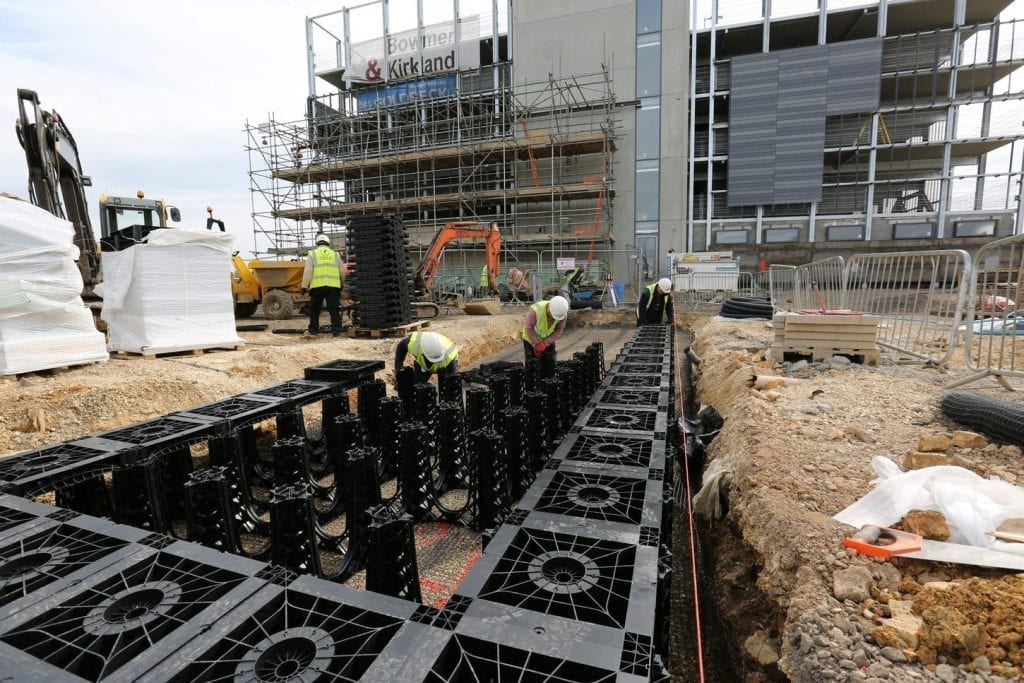
The council created the Peterborough Investment Partnership to work with local business and home-builders to fulfill this ambitious project. Andrew proactively engaged with designer WYG, saving nearly £1 million in costs through the implementation of creative SUDs / LID solutions. Rather than costly excavations and piped solutions, it was possible to use permeable paving, swales and ArborFlow solutions. Where infiltration is poor there is sufficient proximity to the river to surmount this particular challenge. For Andrew, the scheme was about a joined-up approach, early-stage integration of SUDs / LID into the design concepts and creating a space where business owners and home-builders would be encouraged to invest.
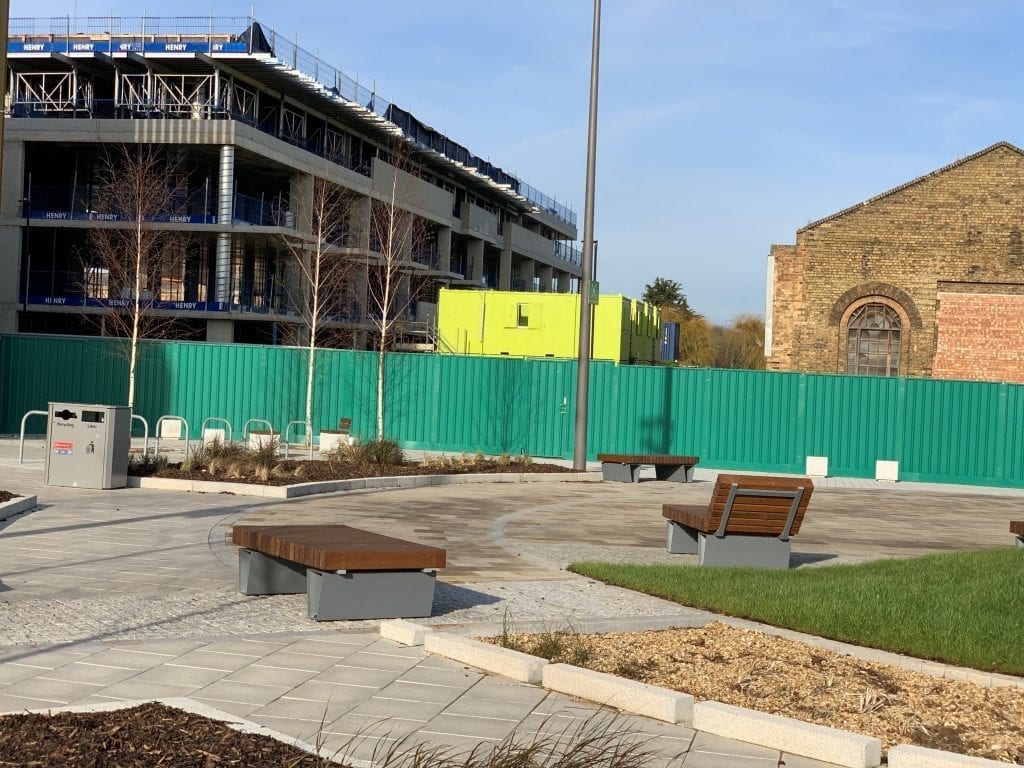
GreenBlue were pleased to assist Bowmer & Kirkland & Boyle Contracts with full SuDS / LID tree pit solutions to include RootSpace for uncompacted healthy soil, Geonet, ArborVent 150mm aeration inlets, ArborGuy anchor kits, Arborsoil Hydro (specialist suds soil) and AborResin Tree Grilles all completed the phase of the project.
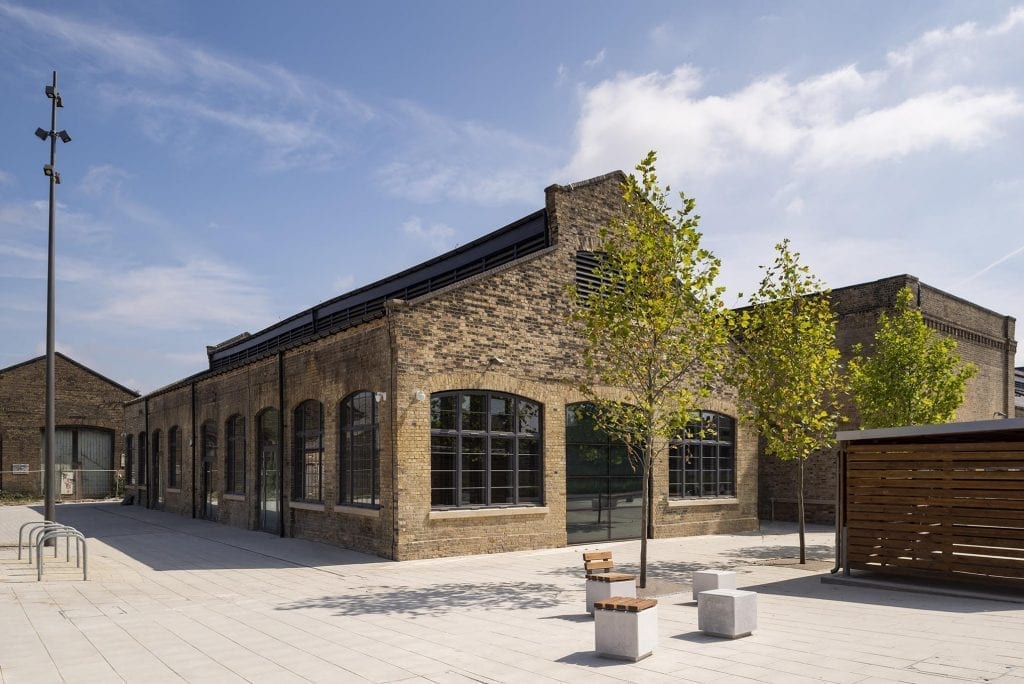
Jack Layton Ferry Terminal – Toronto, ON
The Jack Layton Ferry Terminal is a busy connection hub to the islands across the Toronto Harbor. The preserved parks on the surrounding islands make them cherished destinations for over 1.3 million visitors every year.
The large walkway that connects Queens Quay and the Martin Goodman Trail to the ferry terminal building incorporates RootSpace in the tree planting process to ensure healthy and mature tree growth. Because RootSpace is the most cost-effective way of achieving Toronto’s minimum soil volume target, it is used frequently in City of Toronto projects.
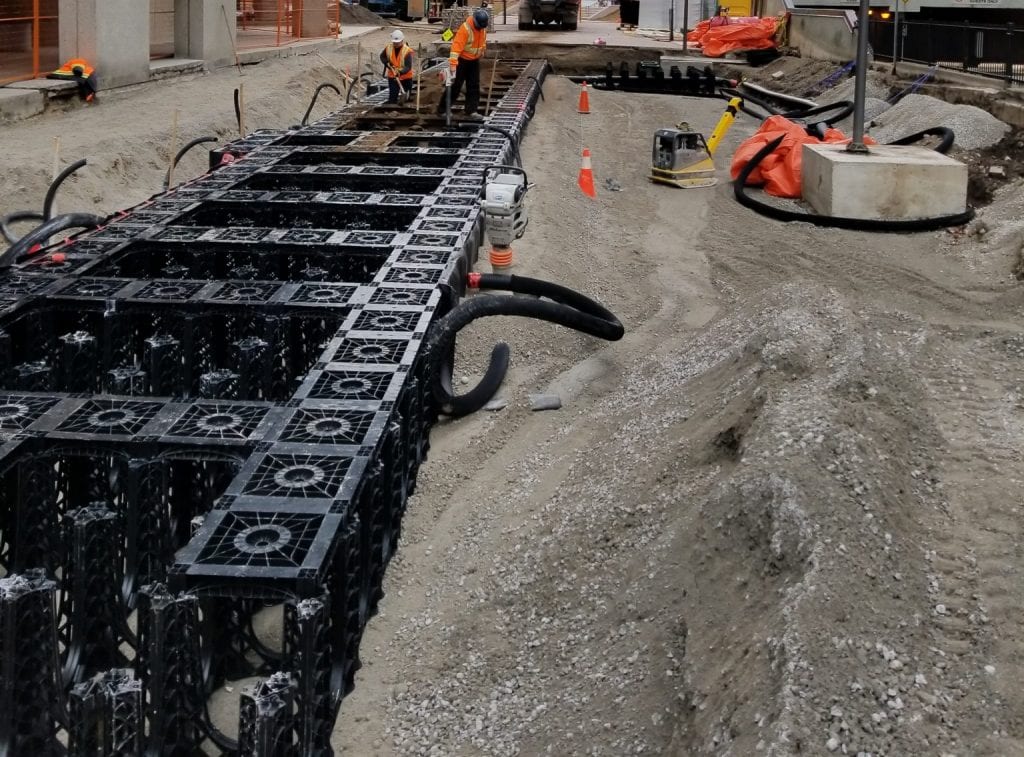
The RootSpace system in this project is doing a lot more than just growing mature trees though. Stormwater throughout the plaza is brought into the tree planting area through a Linear Drain and is distributed throughout the soil within the RootSpace for attenuation and tree root absorption.

Thanks to RootSpace and the intuitive design of the landscape architects at West 8, the redeveloped Toronto islands ferry terminal manages stormwater on site, significantly reducing runoff and improving the quality of the runoff there is.
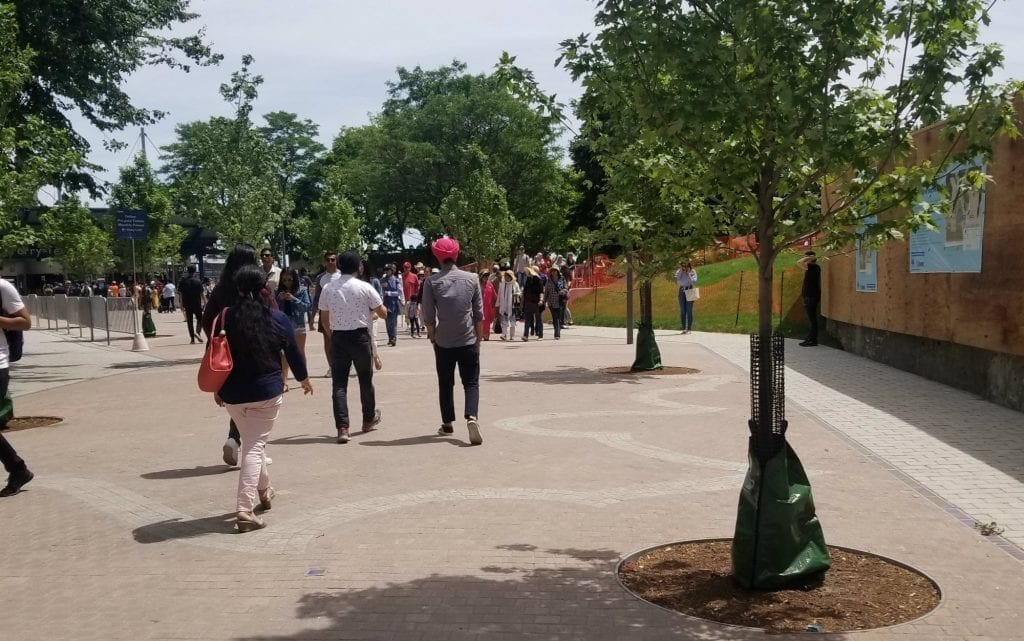
Implementing Green Infrastructure
Advocates for green infrastructure approaches can come from any stakeholder involved in a project. Developments such as streetscapes, commercial buildings, supermarkets, and even residential suburbs can result in the successful implementation of SUDs / LID schemes that do not just use the conventional approach to attenuation, but instead use designs that make use of the ‘four pillars’ of green infrastructure. All developments should be informed by: Amenity, Biodiversity, Quality, Quantity.
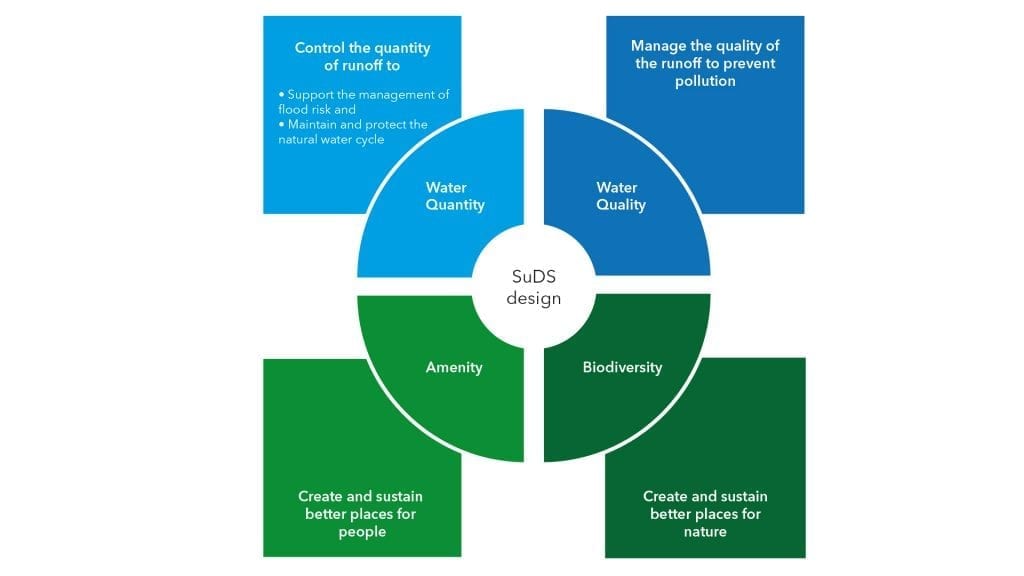
Once developers can see how simple the design changes required can be and how with just a small amount of effort and often very little extra cost, a project can implement green infrastructure principles and work for everyone. It is then often a philosophy that can be applied to subsequent sites.
It is with the small scale ‘wins’ on sites that we can reduce the burden on the developer of having to create huge attenuation basins often to the side of a development, fenced off, providing little amenity value for end users.
This scheme demonstrates how small steps and changes in thinking can become a catalyst for greater change.
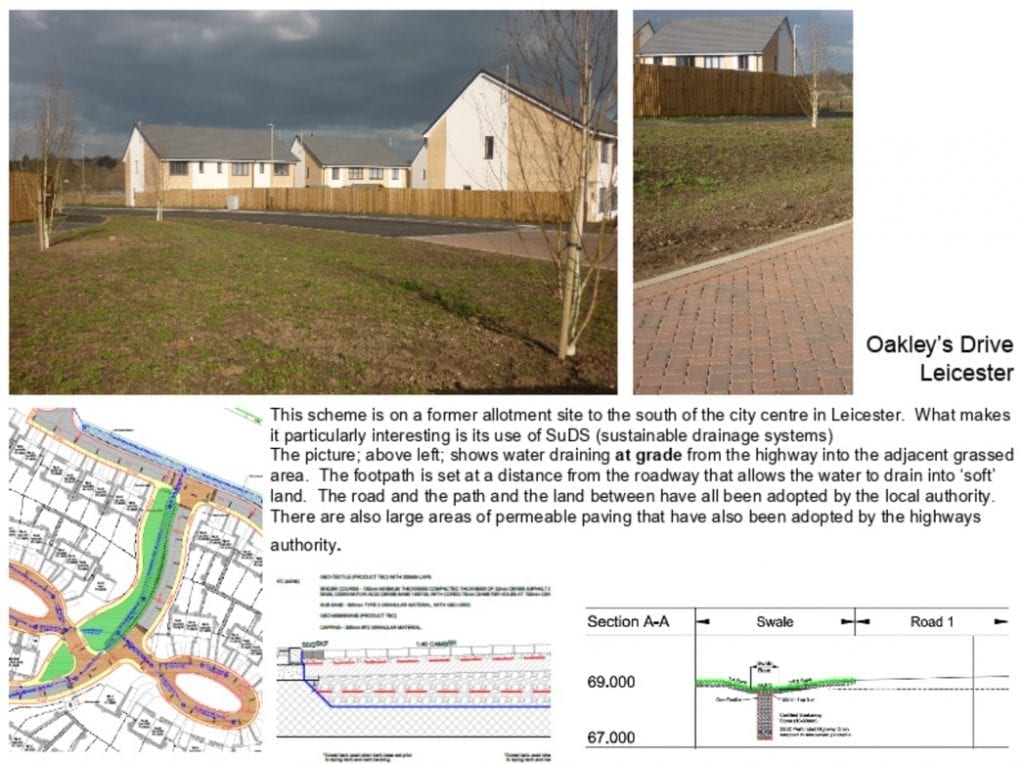
What should be common theme regardless of the green infrastructure approach is an informed pragmatism they bring to their everyday practice. SUDs / LID has to work for a variety of stakeholders, it has to be cost-effective, and if we want it integrated across a variety of land uses there will be compromise, design change and multidisciplinary collaboration required. You won’t always be able to achieve the optimum design given site constraints, but this should not deter us from striving to achieving a more natural means of managing flood risk, of coping with surface water during those heavy rainfall events.
